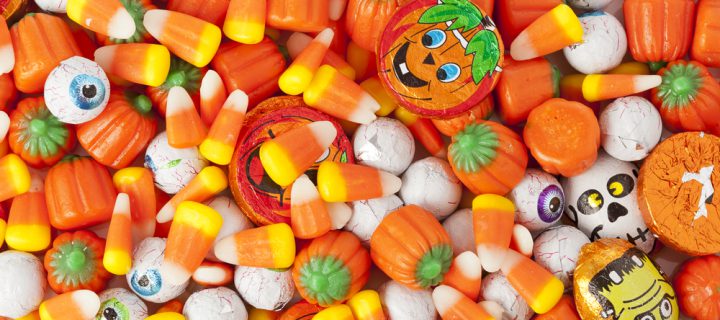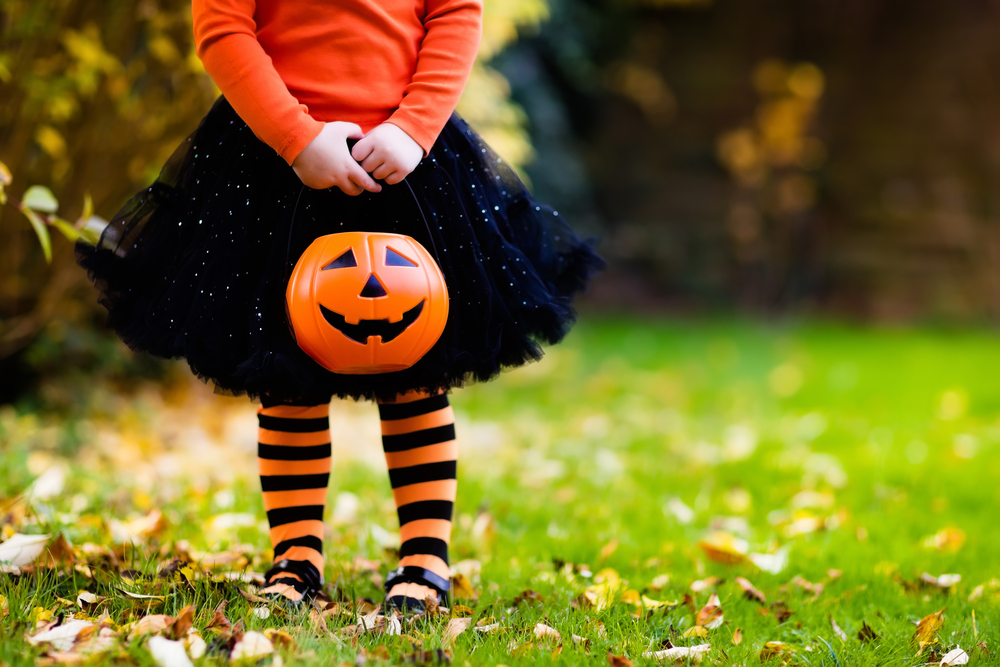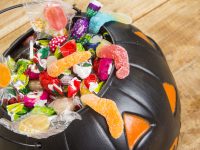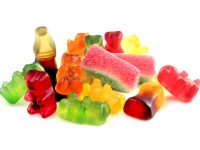From dextrose to glucose and yellow 6, here’s what the ingredients in your treats are all about.
Your kids are about to come home with bags full of treats. As usual, you’ll sort through it together and pack it into the cupboards for safe keeping, and hope they won’t ask to eat it all at every waking moment.
What’s really beyond the wrapper? If you let your child indulge in the treasures found trick-or-treating, you’re probably happy to turn a blind eye and not think about it.
The good news though, is that it’s not all so bad. Of course, you don’t want to eat these ingredients by the truck load, but in moderation, you’ll survive.
Here’s the scoop on 10 common Halloween candy ingredients, and what they really are.
1) Sugar
Sugar is, well, sugar! It’s the white or brown stuff you get in bags at the grocery store. Don’t consume too much of it of course, but in small doses it’s fine, as long as you aren’t diabetic.
2) Corn Syrup
This is a name for sugar in a liquid form. It consists mainly of dextrose, which is a sweet, thick substance that’s made by treating cornstarch with acids or enzymes. On the whole, it’s just a bunch of sweet stuff that doesn’t really give you any added nutrition, but tastes good.
Related: 5 Worst Halloween Treats for Your Teeth
3) Confectioner’s Glaze/Lac Resin
You know that nice, shiny, hard candy coating? This is the secret ingredient that creates it. It comes from the secretions of an insect called the lac bug, (no kidding), which is collected from the twigs and branches these bugs sit on. Yum.
4) Dextrose
Dextrose is a form of sugar, which is also labeled as glucose, and it isn’t very sweet. It is a useful ingredient, though.
5) Gelatin
Gelatin is a protein that’s derived from animal hides and bones, like horses hooves. It’s found in Jello and other treats. Vegans avoid it, and the rest of us probably aren’t aware of it when we eat it.
6) Artificial Flavor
According to the FDA, natural flavors are substances derived from animals or plants. Artificial flavors are those that aren’t. They’re made from chemicals and food additives.
7) Yellow 6
So, this is some of the bad stuff. Yellow 6 is a dye used in food. Unfortunately, the Center for Science in the Public Interest (CSPI) has found it can cause cancerous tumors in the adrenal gland and kidney.
This dye can also occasional hypersensitivity reactions.
That being said, it’s likely that you’d have to ingest very large amounts of yellow 6 to truly be in danger, as the FDA has found it isn’t a significant cancer risk to humans.
8) Yellow 5
Like yellow 6, this dye is widely used, and can cause a severe reaction. Having a reaction is rare, though.
People who are sensitive to aspirin should probably avoid it, as studies indicate a reaction is more common for these individuals.
9) Red 3
Red 3 is a controversial color additive. It was found to cause thyroid tumors in rats, and the FDA recommended that it be banned back in the 1980s. The ban was overruled by the Reagan administration and the dye can still be found in foods like fruit roll-ups and chewing gum.
Often times, companies use red 40 in it’s place, which has been found to be less potent.
10) Citric Acid
It sounds sketchy, but this is a safe food ingredient that creates the sour, tart taste in candies. It’s generally pretty harmless, unlike those colors.
Now you know. And as for that black licorice, it might not be as bad as it seems…Happy Halloween!
Photo credits: Brent Hofacker/Shutterstock.com; FamVeld/Shutterstock.com














